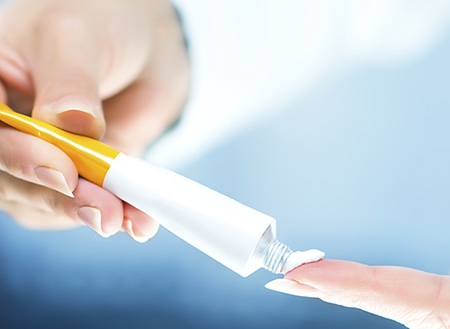At this festive time of the year, people hate to add a doctor’s appointment to their already busy schedules. However, aches, pains, and injuries don’t typically show any regard for our social calendars and to-do lists. The bum knee will swell, the trick hip will give out, and that old shoulder injury will surely flare-up at the most inconvenient time, and don’t forget the back pain from all the decorating and present-wrapping! Rather than squeezing in a trip to our Ortho-ASAP clinic (though we are here for you if you need us!) you can always resort to home remedies. One often overlooked option is the topical analgesic class of medications.
Topical indicates that a product is used directly on the skin rather than ingested. Topical analgesics can often provide a degree of pain and inflammation control without some of the side effects that oral medications often cause. A lot of our patients are unable to take anti-inflammatory or pain medications due to comorbidities, but they are often allowed to safely utilize topical versions instead. Topical analgesics come in three classes.
Anti-Inflammatory
Medications in this class act similarly to oral Ibuprofen, Advil, Aleve, or Motrin. They reduce inflammation in the specific area where they are applied without the systemic effect of their oral counterparts. Oftentimes, patients who have kidney and liver issues or who take blood-thinning medications for a heart condition cannot take the oral version of these medications, but are allowed to utilize a topical version. Voltaren (Diclofenac) Gel is an example that previously required a prescription but is now available over the counter at your local pharmacy. Blue Emu also provides an anti-inflammatory effect.
Mentholated
These medications provide pain relief by applying a product with menthol (an organic compound) to the skin where it acts upon the network of nerves that cause pain. Examples of these medications include Tiger Balm, BioFreeze, and Bengay. These products can be creams, gels, or oils. They are available over-the-counter as well.
Anesthetic
Anesthetic medications utilize local anesthetic products, similar to the well-known Novocaine that your dentist uses, to dull the sensation of pain in the region where they are applied. Examples of these products are Salonpas and Aspercreme. They are available over-the-counter. Lidocaine patches are also available in an over-the-counter strength. Rather than applying a substance to the skin, you can simply apply the patch to the area of discomfort.
All of these products should be used according to their package instructions approved by the FDA. You can ask pharmacy staff to help you pick out the appropriate product. You should always address any concerns of medication interactions or possible side effects on existing health issues with your primary care physician.
This blog is written by one of our very own-Morgan. She is a certified athletic trainer working in our clinic with our providers each and every day. She obtained a bachelor's degree in athletic training from Carroll University in Waukesha and a master's degree in Kinesiology from Michigan State University.

